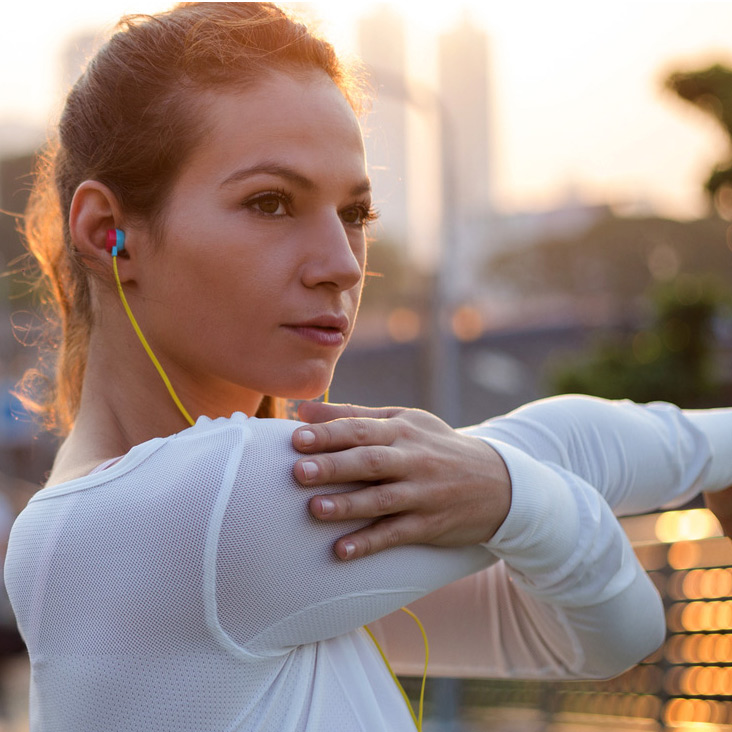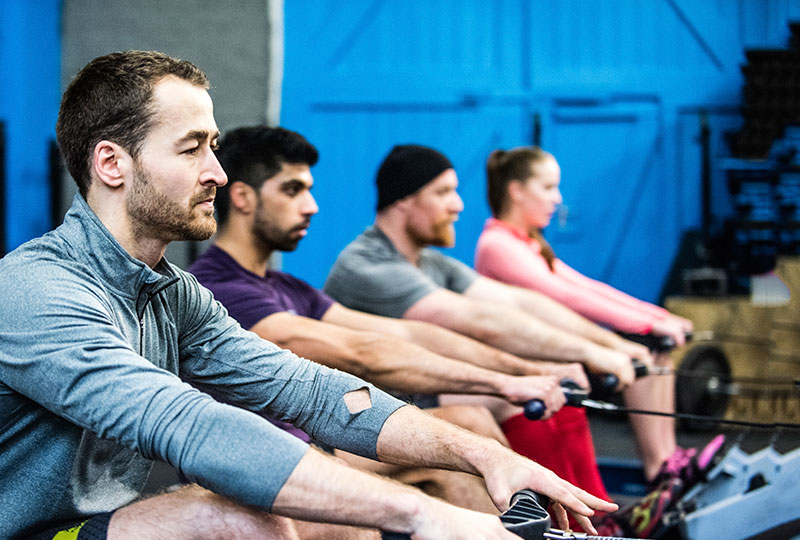Mystified by the lone rower in your gym? Here’s what you need to know.
Rowing is hot in the fitness world, with boutique studios popping up in major cities across the country. It’s no surprise why: rowing machines are easy to use, work your entire body and provide a low-impact cardiovascular workout, says Heather Skaar, PT, administrative director of Vanderbilt Health’s Physical Medicine & Rehabilitation, Acute Care, Dayani Center and Orthopaedic Therapy.
Rowing works your entire body. “Muscles that are not typically engaged in traditional cardiovascular exercises get put through the paces with a rowing session,” Skaar says. Sound rowing works the back, legs, core and arms. In fact, most of your power on the rower should come from your legs.
Get comfortable. Adjust the footstretcher (the plastic piece your foot rests on) so the strap crosses over the ball of your foot. Pull the straps tight enough to hold you securely in place. Grip the handle in a loose overhand grip.
Master the positions. With each stroke, think legs-back-arms. Start with your head neutral and upper body leaning slightly forward. To start your stroke, extend your legs, then sit up tall and slightly back. Finish by pulling the handle to your chest. To return to the top of your stroke, move in reverse order: extend your arms, shift your upper body forward (but don’t slump), then allow your knees to bend.
Work smart. The damper controls how much air flows into the rowing machine’s flywheel. Higher numbers don’t equate to more intensity or resistance. Start with a damper setting around 3 to 5. Keep your stroke rate between 24 and 30 strokes per minute.
Mix it up. If you’re a runner or stick to free weights, consider adding in a session of rowing every now and then. “Cross training has been touted for its preventive benefits,” Skaar says. “By rotating the muscle groups exercised over time, you will help to keep your body more balanced and decrease the potential for injury.”
Maximize your workout. High intensity interval training allows for maximum calorie burn before and after your workout. A heart rate monitor can help you “more accurately target the correct intensity intervals for your workouts,” Skaar says. The American Heart Association recommends exercising at 50 to 85 percent of your maximum heart rate (220 minus your age). Skaar suggests starting with an interval workout, building to 80 percent of your max heart rate, then reducing to under 60 percent.

Looking for a great bodyweight workout to pair with your rowing? Check out these 3 workouts you can do anywhere. No equipment required!

